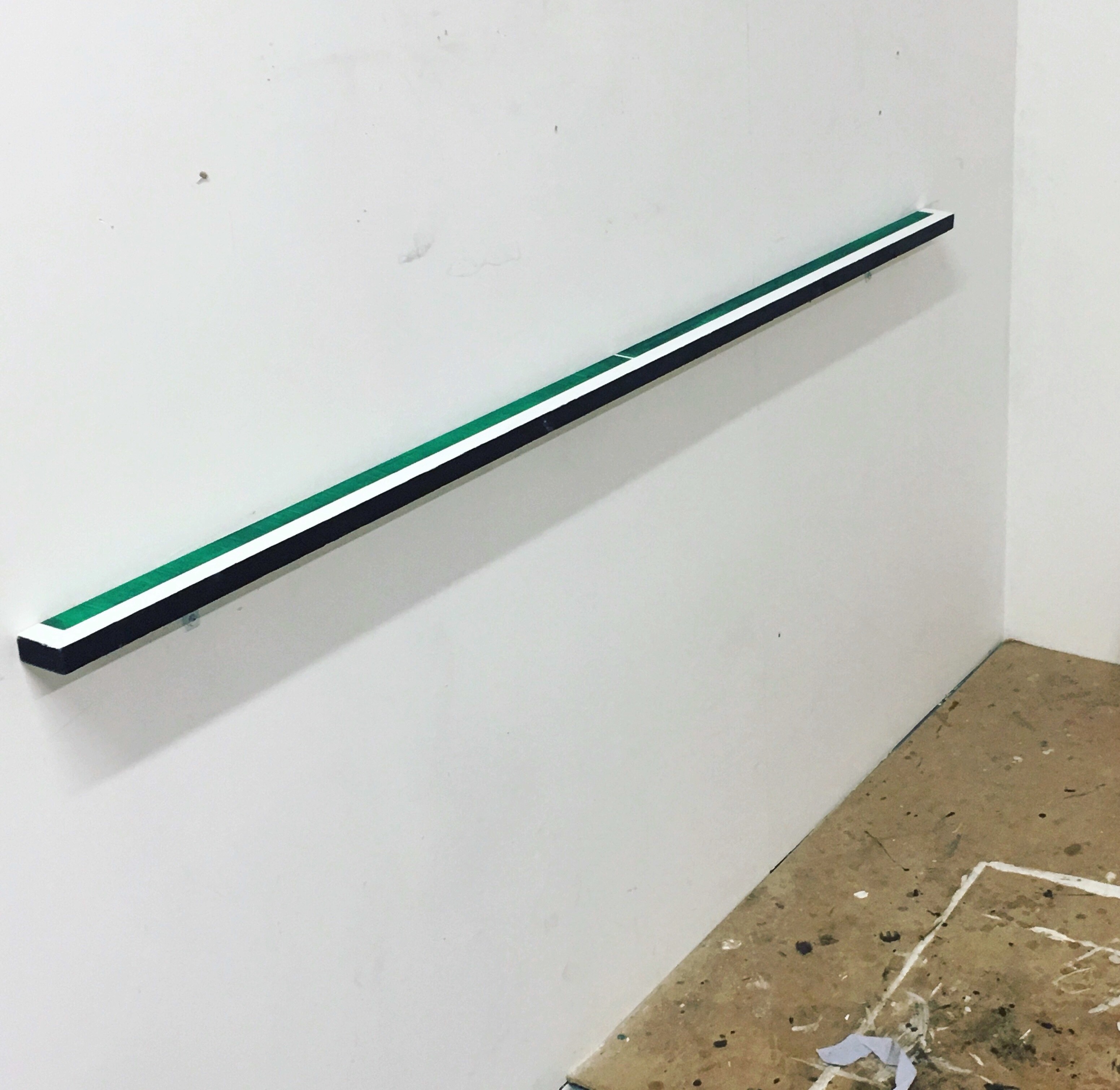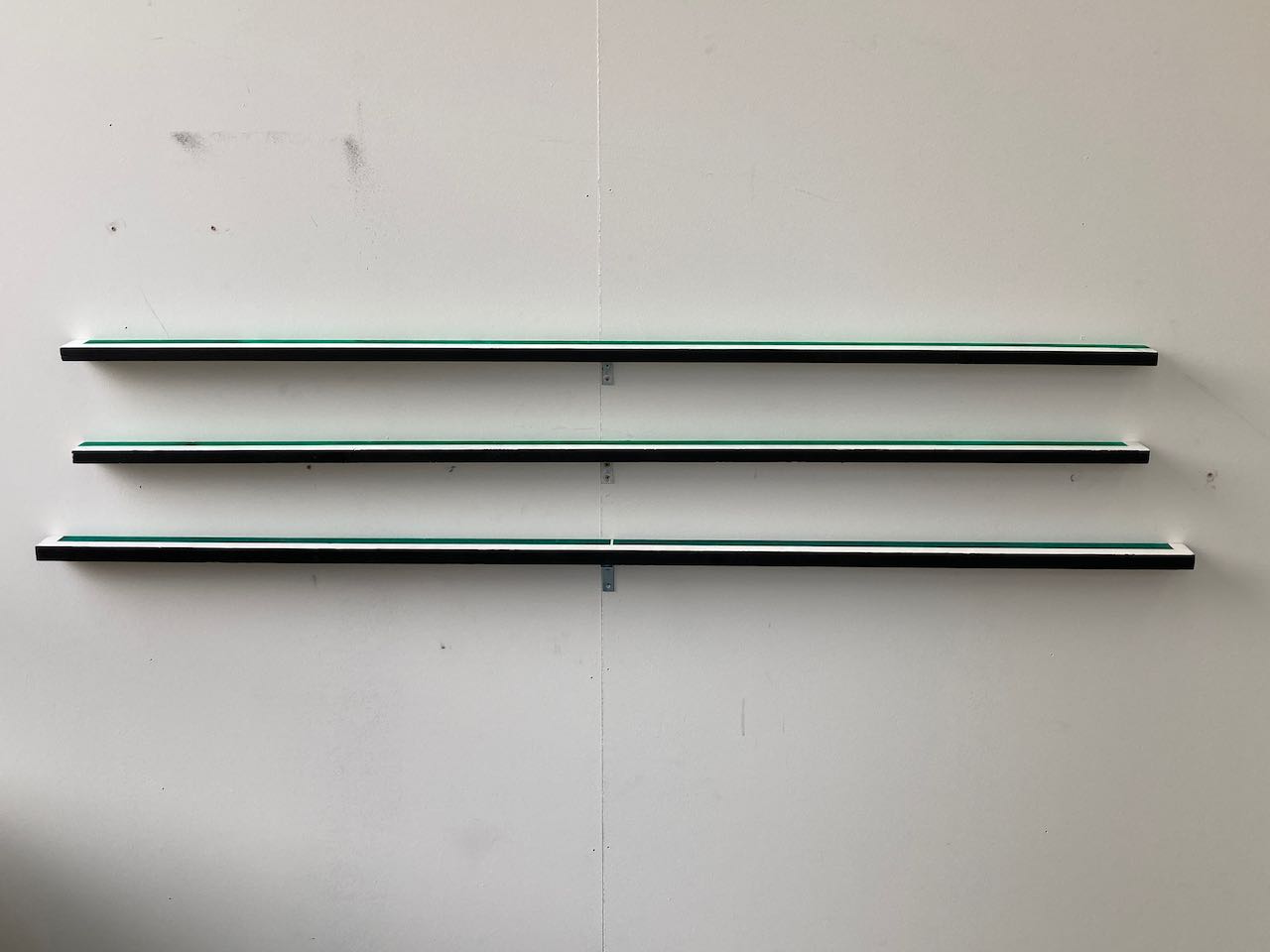




The Edge of a Table Tennis Table 2021
Wood, Paint, Metal
The following is an extract from my 2020 dissertation The Art of Tennis, Developing the Court Image and Resisting the Spectacularisation of Sport. If you would like a copy, please get in contact via email.
“Table tennis, an evolution from tennis, was born in the late 19th century and further removed the players from the playable space. In table tennis, players are physically unable to inhabit the court space – thus only able to exist outside the court. The rules in the International Table Tennis Federation (“ITTF”) handbook in fact stipulate that no player is able to place a hand on the table, and the serve must be taken from behind the edge of the table. Crucially, the oddity created by the shift from real to lawn tennis is removed, and if the ball strikes the player (outside the area of the table), there is no additional affect. The body is finally removed from gameplay (as long as the player is not leaning over the table). The players look onto the table surface from above, and the court becomes an abstract plane.
The removal of the walls from real tennis also ushered in another feature of the court image: the grid. A lot of sports, are played in rectangular spaces, with lines marking a grid like pattern on their surface. It is not a coincidence that the rise of tennis and table tennis in the 20th century coincides with the beginnings of the use of the grid in Western modern art. As sport was becoming standardised, artists such as Mondrian and Malevich made the grid the core subject of their paintings . The logic of the grid and its imposition on the body is demonstrated in Eadweard Muybridge’s photography, which brought a new pictorial rationality to the movement of animals and people. Rosalind Krauss, in her 1979 essay Grids,explains that the use of the grid in 20th century western art “functions to declare the modernity of modern art”. She explains that at its heart, the use of a grid presents a contradiction; on one hand it demonstrates a scientific logic, yet at the same time there is some further idea that the grid provides some sort of spiritual release. She concludes that the grid for her is a myth and “like all myths, it deals with paradox… by covering them over so that they seem (but only seem) to go away”. Interestingly in tennis, the grids of lines themselves are a form of fiction. If the ball lands on the line or touches a line denoting the outside of the active court, the ball is still in. The thickness of each line, relating to the pictorial device of a grid on a court surface, is immaterial to its function. It is only after you cross that infinitely narrow boundary between the edge of the line and the outside of the court that the ball will be out. The same fallacy is demonstrated more clearly in table tennis. There is a line which is painted on around the perimeter of the table top, but this serves no purpose at all. If the ball hits this line during open play, it is just as in as the rest of the table surface. The edges of the table act as the true boundary of play, with the court surface in table tennis, as in tennis, serving as practical demonstrations of the myth of the grid.”